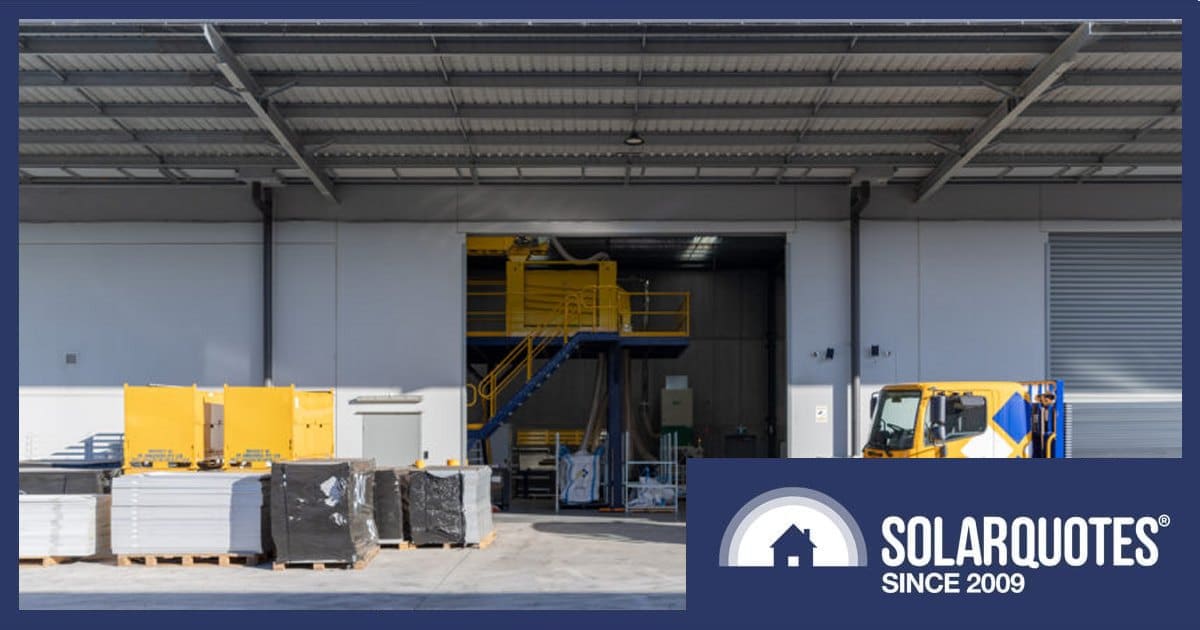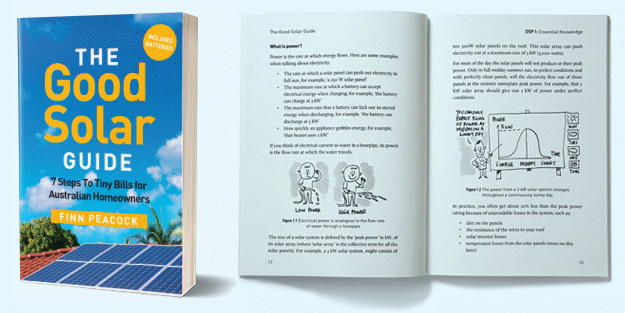
PV Industries’ new solar panel recycling facility at Bankstown Airport officially opened this week, supported by funding from the New South Wales Environment Protection Authority (EPA).
How Many Solar Panels Can The Facility Recycle?
The EPA says the new Bankstown facility is expected to process up to 6,000 tonnes of solar panels per year; diverting approximately 200,000 panels from landfill annually. Processing of each solar panel is pretty quick — under 90 seconds.
The numbers are a little odd. 6,000 tonnes/200,000 panels annually works out to each panel weighing around 30 kilograms, but most solar panels used for rooftop installations these days weigh in at approximately 21 kilograms, and older lower-wattage panels even less. Larger, heavier modules may be used in commercial, industrial and utility scale PV facilities, but most of the panels processed will likely come from residential sources in the facility’s early years of operations.
And to process 200,000 panels annually at ~90 seconds each would take around 208 days of a single processing line running 24/7; however there may be more than one line at the Bankstown facility. Added: 31 October – in the comments below, Erik has pointed out given there are multiple stages in the process; panels may move through different stages at once, significantly reducing overall processing line runtime.
How Are The Solar Panels Recycled?
After panels are transported to the facility:
- The frame, junction box and cables are separated.
- The glass is separated
- Metals recovery occurs; including, aluminium, copper, silver and other valuable metals.
- Materials are shipped for reuse in various local manufacturing.
There wasn’t any mention of silicon recovery.
Two recycling technologies have been developed by PV Industries; the aptly-named “Deframer” and “Deglasser”. According to the firm, PV Industries is the first (and only) company to have an automated de-framing machine in Australia. The EPA says PV Industries’ process can recover up to 90% of the material in a solar panel by weight.
Supported By Circular Solar Grants
In 2019, the NSW Government created a $10 million initiative called Circular Solar to reduce the quantity of solar panels and battery systems winding up in landfill. In the first round of funding awarded in 2021, PV Industries received $997,969 to:
- Develop safe handling and transport procedures.
- Establish a distributed collection and logistics network.
- Optimise high-value processing approaches.
- Activate new end-markets for recovered glass.
Then in 2022, the firm received $2,371,581 under round 2 of Circular Solar to scale-up its processing tech, establish the Bankstown facility and expand its collection and logistics network.
“The NSW EPA had the foresight in 2019 to establish the Circular Solar grant program, the first of its kind in Australia, to futureproof NSW’s solar recycling capacity,” said PV Industries co-founder James Petesic. “It enabled us at PV Industries, a local Sydney start-up, to bring our Deframer and Deglasser to life and ensure we are ready for the pending wave of end-of-life solar panels.”
The EPA says solar panel waste in NSW could reach up to 63,000 tonnes per year by 2035.
“This new Bankstown facility is a game changer, with the capacity to take large amounts of solar panel waste and drive new end-markets for recovered glass and critical minerals,” said NSW Environment Protection Authority (EPA) Chief Executive Tony Chappel.
Six drop off points have been established across the state: in Bankstown, Dubbo, Maitland, Newcastle, Thornleigh and the Central Coast.
National Solar Panel Stewardship Scheme Progress
Annual solar panel waste volumes in Australia are predicted to grow from 59,340 tonnes in 2025 to 91,165 tonnes in 2030; with most of that volume from residential solar installations.
While good quality solar panels should have a service life of 25 years; not all panels installed here have been of good quality — and solar system upgrades can see panels tossed well before their service life is over. There have been various efforts to export still-functioning solar panels overseas to developing countries, but that’s been getting tougher due to the costs involved and plummeting prices for new solar panels.
A national stewardship scheme has been a case of kicking the can down the road. Back in 2021, then-Federal Minister for the Environment Sussan Ley said a solar industry-led nationwide stewardship scheme design must be finalised by June 2022.
This was met by accusations from the Clean Energy Council (CEC) that it had worked to develop one, but the Federal Government had “walked away” from the partnership. Ms Ley returned fire without mentioning the CEC’s efforts specifically, but stating submissions for such a scheme lacked a “cohesive, coordinated and sustainable approach”.
In September this year, a coalition of dozens of industry, community and business groups along with various local governments called on the Federal Government to establish a mandatory solar panel stewardship scheme during this parliamentary term.
The NSW Government states it is working with other states and territories to progress a national scheme and will present preliminary options to the Energy and Climate Change Ministerial Council early next year.

 RSS - Posts
RSS - Posts



Best news this year!
There is some interesting information here, but it isn’t balanced. For example, it doesn’t deal with renewables massive carbon footprint nor does it deal with the cost of dismantling nor the Government subsidies they enjoy nor their total cost, although it always knows how much alternative energy systems cost.
Hi Tony,
Most modern solar panels repay the carbon dioxide emissions from their manufacturing and installation within 0.44 to 1.42 years, with an average of about 1.1 years for panels made in China, and slightly less (around 1.05 years) for panels made in Europe where grid electricity is cleaner.
The energy payback time—when a solar panel generates the same amount of energy that was required to produce it—is typically between 0.5 and 1.2 years.
Solar in Australia performs better than the world average because it’s generally sunny here.
The RET incentive paid for new solar isn’t government subsidy. In fact it’s a carbon tax paid by the countries 200 biggest polluters.
Michael,
Even if the total recycling process takes 90 seconds, the existence of at least two stages suggests that the process “pipelines”, with a number of panels at various stages at any time. Then just three stages would bring the annual run time back to one 8 hr shift per day for the 208 days – about a normal working year, I figure.
It’s fun to speculate, but if they’re only about to start up, then it’s all a guess, even from their side?
I wonder if they’re still arguing about the one in Adelaide?
Just think, with fuel-free energy and complete recycling, we could live in a way which does not destroy our narrow niche of civilisational viability – if our exponentially growing grid-energy adoption rate, especially batteries, accelerates hard, *now*, and transport transition gets out of first gear. The tipping points are tumbling, due to past inaction – why are we determined to make life so hard for our children? (It’s non-linear – the mayhem multiplies off the scale, folks.)
Hi Erik, re: “pipelining” – makes sense; thanks for pointing it out and I’ll add a note to the article.
Erik Christiansen: – “The tipping points are tumbling, due to past inaction – why are we determined to make life so hard for our children?”
Powerful vested interests too interested in short-term profits.
Meanwhile, BioScience published a journal article on 29 Oct 2025 by William J Ripple et al. titled The 2025 state of the climate report: a planet on the brink. It began with:
https://doi.org/10.1093/biosci/biaf149
Pleased to hear it.
There should be a levy on the panels to fund the recycling of them.
Silicon recycling requires much more energy for reprocessesing than the recycling of metals does. It’s not a metal so can’t be melted and reused as easily as a metal can.
If solar panels can be transported to all parts of Australia for installation there should be a similar network set up for collection of panels for recycling. Many parts of the state are hundreds of kilometres from the collection points listed in the post.
It’s a great start.